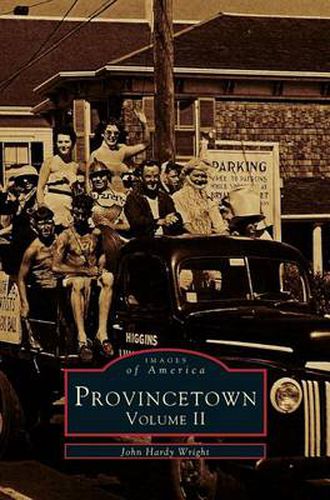Readings Newsletter
Become a Readings Member to make your shopping experience even easier.
Sign in or sign up for free!
You’re not far away from qualifying for FREE standard shipping within Australia
You’ve qualified for FREE standard shipping within Australia
The cart is loading…






This title is printed to order. This book may have been self-published. If so, we cannot guarantee the quality of the content. In the main most books will have gone through the editing process however some may not. We therefore suggest that you be aware of this before ordering this book. If in doubt check either the author or publisher’s details as we are unable to accept any returns unless they are faulty. Please contact us if you have any questions.
By the beginning of the twentieth century, picturesque Provincetown– incorporated in 1727–was no longer one of the major seaports of Massachusetts involved in the whaling industry. The fishing industry was still going strong due to the hard-working Portuguese fishermen, but commercial interests looked towards tourism as they had in many other towns and cities. Where once fishing shacks and warehouses dotted the shoreline off Commercial Street, comfortable and well-appointed guesthouses and restaurants emerged to support the growing numbers of day-trippers (many of whom arrived by ferry from Boston) and vacationers who were discovering this charming town at the very tip of Cape Cod. Tourists had visited Provincetown early on. Henry David Thoreau made three walking trips on Cape Cod around 1850, but it was not until the turn of the century that artists, followed by playwrights, authors, and musicians, realized they could live inexpensively in a community that fostered creativity. The artistic and literary culture of Provincetown was enhanced by hangers-on who enjoyed the Bohemian lifestyle. Counter-culture hippies of the 1960s blended in with the colorful personalities of those individuals who came to P-town to pursue an alternative lifestyle. Gays and Lesbians have transformed many aspects of the town–both architectural and cultural–in its evolution from a fishing village to a popular and prosperous year-round resort community. Provincetown Volume I, published in 1997, focuses on the architecture and social history of this atypical town. This eagerly anticipated sequel features views of the shore, harbor, and ocean, the whaling and fishing industries, art and artists, playwrights and authors, entertainers, and alternative lifestyles.
$9.00 standard shipping within Australia
FREE standard shipping within Australia for orders over $100.00
Express & International shipping calculated at checkout
This title is printed to order. This book may have been self-published. If so, we cannot guarantee the quality of the content. In the main most books will have gone through the editing process however some may not. We therefore suggest that you be aware of this before ordering this book. If in doubt check either the author or publisher’s details as we are unable to accept any returns unless they are faulty. Please contact us if you have any questions.
By the beginning of the twentieth century, picturesque Provincetown– incorporated in 1727–was no longer one of the major seaports of Massachusetts involved in the whaling industry. The fishing industry was still going strong due to the hard-working Portuguese fishermen, but commercial interests looked towards tourism as they had in many other towns and cities. Where once fishing shacks and warehouses dotted the shoreline off Commercial Street, comfortable and well-appointed guesthouses and restaurants emerged to support the growing numbers of day-trippers (many of whom arrived by ferry from Boston) and vacationers who were discovering this charming town at the very tip of Cape Cod. Tourists had visited Provincetown early on. Henry David Thoreau made three walking trips on Cape Cod around 1850, but it was not until the turn of the century that artists, followed by playwrights, authors, and musicians, realized they could live inexpensively in a community that fostered creativity. The artistic and literary culture of Provincetown was enhanced by hangers-on who enjoyed the Bohemian lifestyle. Counter-culture hippies of the 1960s blended in with the colorful personalities of those individuals who came to P-town to pursue an alternative lifestyle. Gays and Lesbians have transformed many aspects of the town–both architectural and cultural–in its evolution from a fishing village to a popular and prosperous year-round resort community. Provincetown Volume I, published in 1997, focuses on the architecture and social history of this atypical town. This eagerly anticipated sequel features views of the shore, harbor, and ocean, the whaling and fishing industries, art and artists, playwrights and authors, entertainers, and alternative lifestyles.